Do you take steps to promote your content? Are you using the right content amplification tools?
The best content in the world is meaningless if no one is paying attention to it. Creating great, exceptional content is only the first step in a long journey. Despite what some experts might say, the journey does not end when the content goes live – the ultimate goal is to get that content in front of the right eyes. Content amplification can help to deliver content to a qualified audience.
Content amplification is the process that marries valuable content with paid tactics. The targeting that content amplification employs allows marketers to put their content in front of their ideal customers across multiple channels, including websites, social media sites, and other properties. When content is deployed and activated on these platforms, marketers can then route traffic to their owned media and leverage social sharing elements. A smart content marketing strategy will utilize several content amplification tools that belong to all types of media shown below:

a) Owned media consists of the platforms that belong to the company and marketing team. They are channels where the content creator is in control of the content, such as social media profiles, websites, and newsletters.
b) Earned media is made up of outside content channels. It involves other people sharing content, such as in reviews, recommendations, social media shares, blog posts, or media coverage. You don’t own these media, but you can get access via outreach. You can either use tools that automate outreach or do it all manually.
C) Paid media incorporates the channels that the content creator pays for, such as ads on social media sites, display advertising, pay-per-click ads, and sponsored content.
Content amplification and distribution strategies can merge these channels for greater results. Here are 10 valuable content amplification tools available on both social media and the internet to boost your content online…
#1 – AddThis
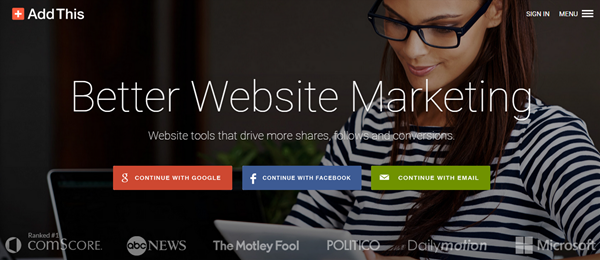
AddThis allows site owners to increase traffic to their website by implementing simple ways for visitors to share content. These content amplification tools increase audience engagement with users that aren’t on the site and allow content to be distributed across multiple platforms and social networks, which drives traffic back to the website.
#2 – ShareThis
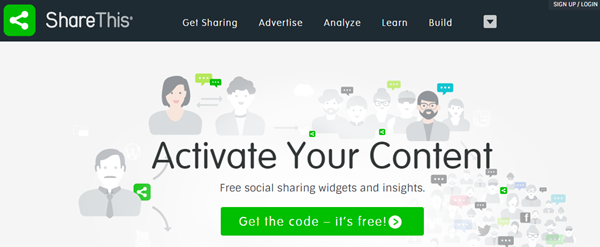
ShareThis is an all-in-one solution that allows visitors to share web content with friends and family via a variety of channels, including social media, email, instant messages, and even text messages. The insights provided give a broad view of social intelligence and real time analytics for developers, brands, and content publishers.
#3 – LinkedIn
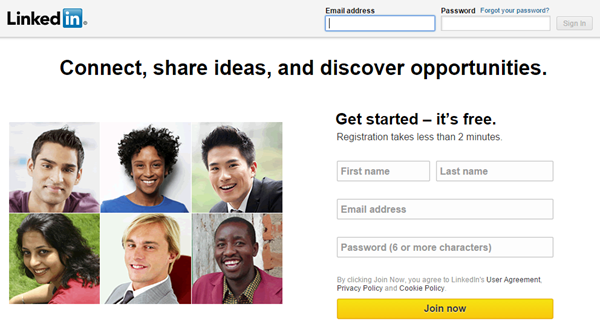
LinkedIn has opened its publishing platform to all users, which now allows marketing teams to natively post engaging content on the social network. These posts can be useful for driving traffic to the brand’s owned properties or other social media profiles. By maintaining a blog on a LinkedIn profile companies are able to create stronger professional brands and continue to promote themselves as an industry thought leader.
#4 – Facebook ads
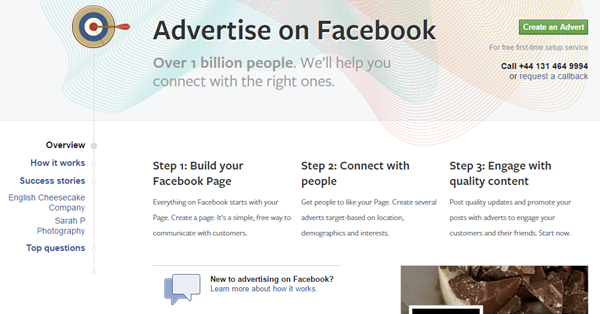
Most online ads only reach a fraction of the intended audience. Facebook’s average reach for ads is 91.3%, which gives businesses a good bang for their buck. Facebook ads can be targeted by location, age, and other options.
#5 – Promoted tweets
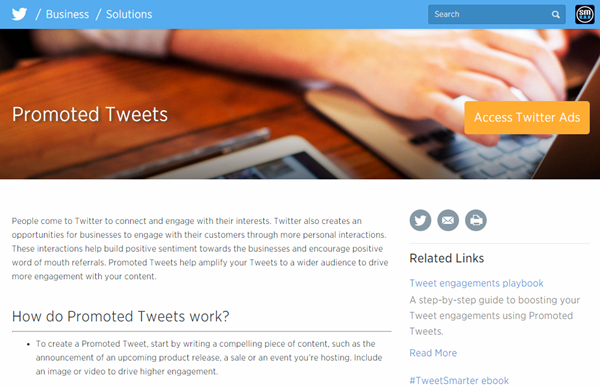
Promoted tweets on Twitter are deployed to current fans and potential followers. Promoted tweets begin with a compelling piece of content that is then targeted to the right audience through Twitter’s filtering options. After the campaign launch, the promoted tweet appears in the home timelines of targeted users.
#6 – Buffer
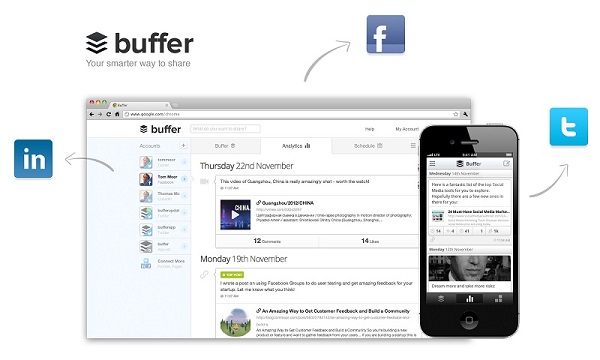
Buffer is a social media management tool that allows the user to schedule Facebook, Twitter, LinkedIn, and Google+ posts so they post at optimum times (or users can let Buffer automatically schedule posts at ideal times). Users can also “re-buffer” older content right from the app dashboard to give content pieces more traction. Buffer reached their one millionth user milestone in September 2013 and don’t show any signs of slowing down.
#7 – MailChimp
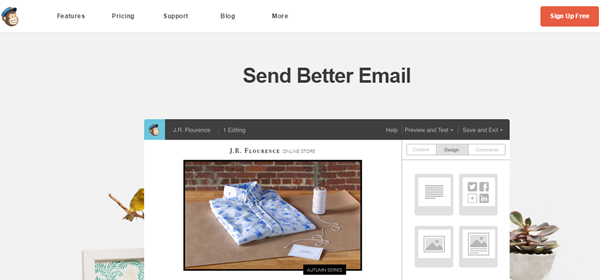
MailChimp is a freemium web-based email marketing platform that allows marketers to share their content through email newsletters. The free plan option allows users to send 12,000 emails per month to up to 2,000 subscribers. MailChimp is easy to use, offering pre-designed templates and an email designer that lets users create free newsletter templates. It can also be easily integrated into Facebook and WordPress so that companies can build their email lists all across the web. By analyzing the metrics within MailChimp marketing teams can tweak campaigns for better results over time.
#8 – Storify
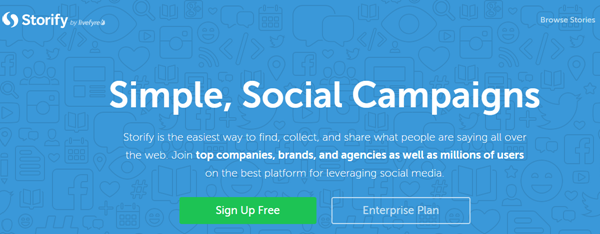
Storify allows users to create timelines and “stories” through social media and other sites like Facebook, Instagram, Google, YouTube, and Twitter. Users can search social networks through Storify and drag these elements into timelines. They can also add text to give the reader context. Organizations have used Storify to cover events, meetings, conversations, social movements, and elections.
#9 – Hootsuite
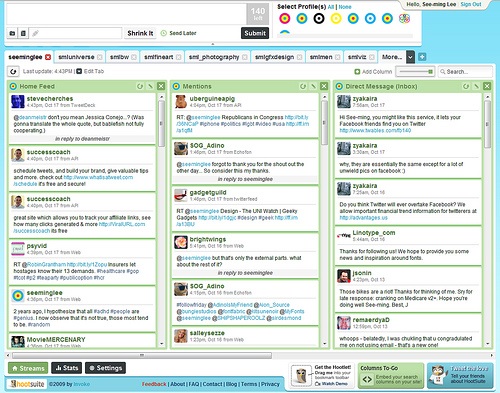
Hootsuite is a social media dashboard that allows marketers to manage multiple social networks and profiles as well as measure the success of the content they share. It supports major social media networks and platforms such as Facebook, LinkedIn, Twitter, Google+, WordPress, Foursquare, and MySpace. Additional integrations for sites like Instagram, Reddit, Storify, YouTube, and Tumlbr are available in the Hootsuite App Directory. The social media amplification tool operates on a freemium model which makes it a cost-effective solution for marketers on a budget.
#10 – Outbrain
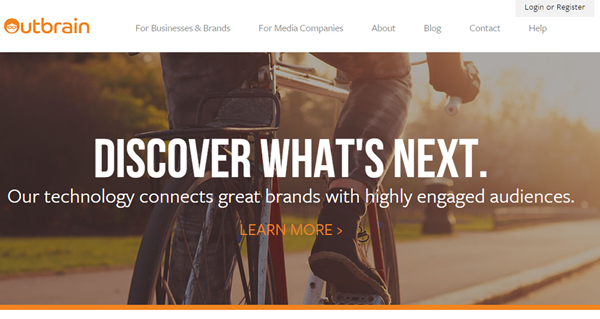
Outbrain is a content discovery platform. This advertising platform allows Internet publishers to grow traffic to their websites by recommending their content to visitors, keeping the visitor on the site and increasing their engagement. The platform targets visitors and presents them with related articles and other trusted content.
A comprehensive content marketing strategy is more than just boosting content or running promotions. Implementing the right content amplification strategy will ensure longevity as well as a positive ROI.
Content amplification is a diverse strategy that involves many elements, but the most important thing is perhaps the most obvious: the content itself. It’s of no use to promote substandard work. Content amplification tools should be used to put high-quality content in front of the right audience. Otherwise vital marketing dollars are being washed down the drawn.
Which content amplification tools do you use to promote your content? Are any of the important ones missing here? Please leave your comments below.
If you found the above post on the 10 content amplification tools you must have helpful and feel your followers and friends will find it helpful too, please share it with them by clicking on the share buttons below.
About Nick Rojas
Nick Rojas is a business consultant and writer who lives in Los Angeles and Chicago. He has consulted small and medium-sized enterprises for over twenty years. You can follow him on Twitter @NickARojas.
